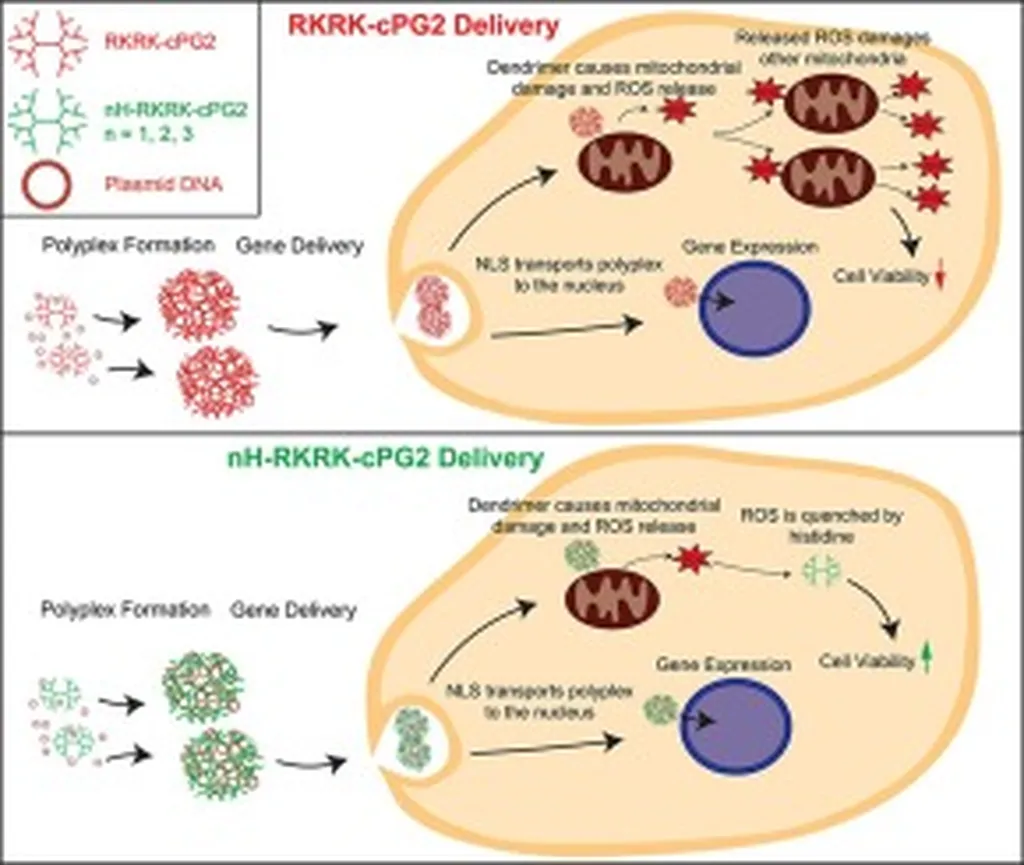In the quest to improve gene delivery systems, researchers have long grappled with the challenge of balancing efficiency and cytotoxicity. A recent study published in the journal *Biofunctional Materials* (which translates to *Functional Biomaterials* in English), led by Viola B. Morris from the Division of Biosurface Technology at the Sree Chitra Tirunal Institute for Medical Sciences and Technology in India, offers a promising advancement in this field. The research focuses on modifying a well-known gene delivery vector, branched polyethyleneimine (PEI), to enhance its properties while reducing its toxicity.
PEI has been a staple in gene delivery due to its high transfection efficiency, but its clinical use has been hampered by its cytotoxicity and sensitivity to serum. Morris and her team aimed to address these issues by chemically modifying PEI with the amino acid histidine via a five-armed alkylamino siloxane. The spatial orientation of histidine was anticipated to improve cellular uptake and endosomal escape, crucial steps in the gene delivery process.
“The spatial orientation of histidine was a key factor in our approach,” Morris explained. “We believed that by strategically placing histidine, we could enhance the polymer’s ability to enter cells and escape from endosomes, thereby improving transfection efficiency.”
The modified PEI, termed P(S-His)1, demonstrated significant improvements. It showed elevated cellular uptake through multiple pathways and rapid endosomal escape via the proton sponge effect, outperforming both unmodified PEI and other derivatives with higher histidine conjugation. This enhancement was attributed to the strategic placement of histidine, which facilitated the polymer’s interaction with cellular components.
However, the story took an unexpected turn when the team further modified the polymer with polyethylene glycol-folic acid (PEG-FA) to enhance receptor-mediated cellular targeting. While cellular uptake improved through additional pathways, the transfection efficiency unexpectedly decreased. This reduction was likely due to the high molecular weight PEG, which reduced the ionic strength of the polyplex, preventing the release of the plasmid for gene transcription.
“This was a surprising finding,” Morris noted. “We had anticipated that adding PEG-FA would further enhance transfection efficiency, but the results showed otherwise. It highlights the complex interplay between different components in gene delivery systems.”
The implications of this research are significant for the field of gene delivery and beyond. The findings could pave the way for more effective and safer gene delivery vectors, with potential applications in various sectors, including the energy sector. For instance, advancements in gene delivery could lead to improved biofuels production, enhanced crop yields, and more efficient waste management through biotechnological processes.
As the energy sector increasingly turns to biotechnological solutions to address sustainability challenges, the development of safer and more efficient gene delivery vectors becomes ever more critical. This research not only advances our understanding of gene delivery mechanisms but also opens up new possibilities for commercial applications in the energy sector and beyond.
In the words of Morris, “Our work underscores the importance of careful design and modification of gene delivery vectors. The spatial orientation of functional groups can significantly impact their performance, and this principle can be applied to develop more effective and safer gene delivery systems.”
As the field continues to evolve, the insights gained from this study will undoubtedly shape future developments, driving innovation and progress in gene delivery technologies.

